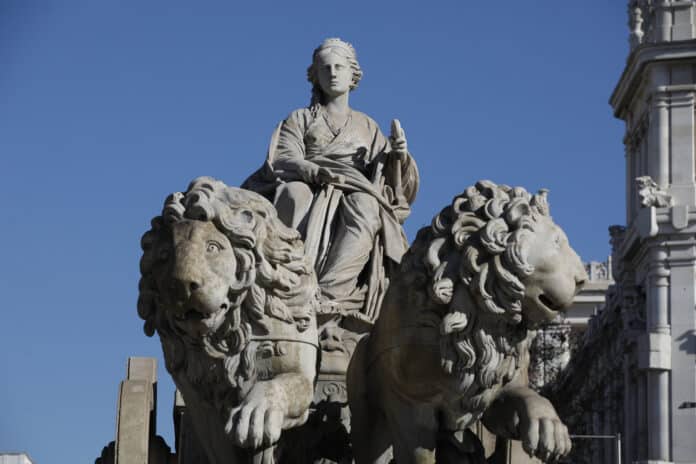The Delegate for Culture, Tourism and Sport, Marta Rivera de la Cruz, has revealed the results of the studies carried out at the iconic Cybele Fountain during January through May 2025. These studies, managed by the Directorate-General for Cultural Heritage and Urban Landscape, form the basis for an intervention proposal intended to ensure its proper conservation.
With an investment of around €16,000 and a period of 14 weeks, the studies included a historical-constructive analysis, evaluation of stone and metal materials, and an exhaustive assessment of its state of conservation. A multidisciplinary team composed of architects, conservator-restorers, historians, physicists, and chemists identified problems such as dirt accumulation, cracks, oxidation of iron parts, and stability issues.
The intervention plan, which will begin in June 2026 and will end in October of the same year, will involve an investment of more than 350,000 euros. The planned actions include the installation of auxiliary equipment, removal of inadequate mortars, cleaning and treatment of joints, and consolidation of stone materials. Additionally, biocidal treatments will be applied, the corrosion of metallic elements will be addressed, and the stability of the monumental complex will be reinforced. The process will conclude with the reintegration of losses and the application of a water-repellent treatment.
This intervention forms part of the municipal strategy for the conservation of Madrid's cultural heritage. The Cibeles Fountain, designed by Ventura Rodríguez in 1777, is an undisputed symbol of the city. The fountain depicts the Phrygian goddess of nature in her chariot, sculpted by Francisco Gutiérrez, with lions carved by Roberto Michel.
Throughout its history, the fountain has undergone multiple transformations and restorations. In 1895, it was moved and raised three meters above its original level. During the Civil War, it was protected with earth bags. The most recent restoration, in 2016, focused on the cleaning and consolidation of the stone. Integrated into the Landscape of Light, declared a World Heritage Site by UNESCO in 2021, the Fuente de Cibeles continues to be one of the capital's most emblematic monuments.



